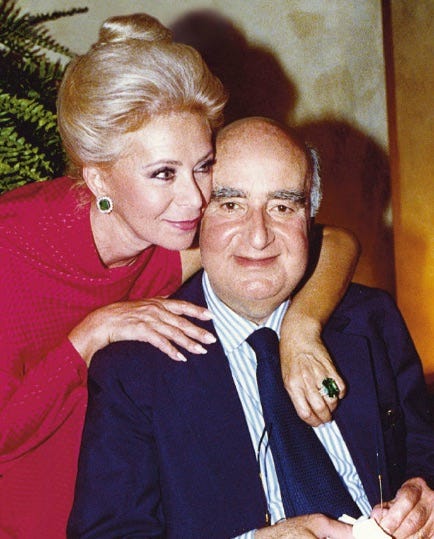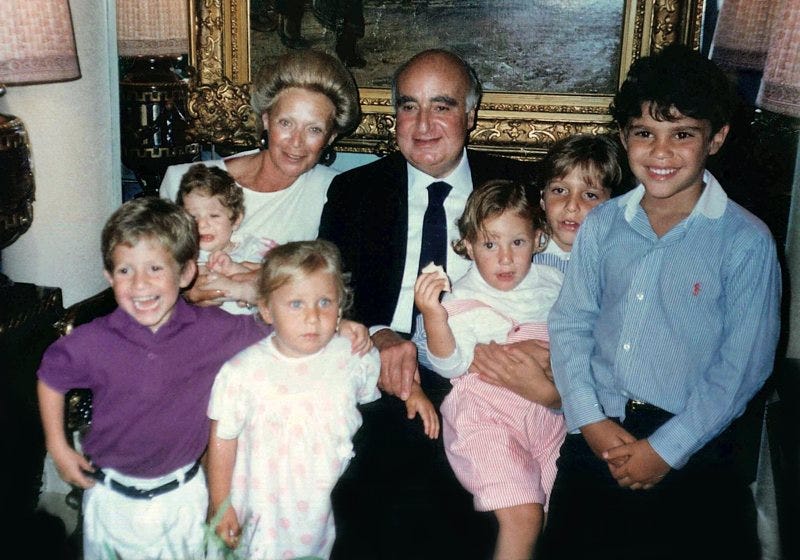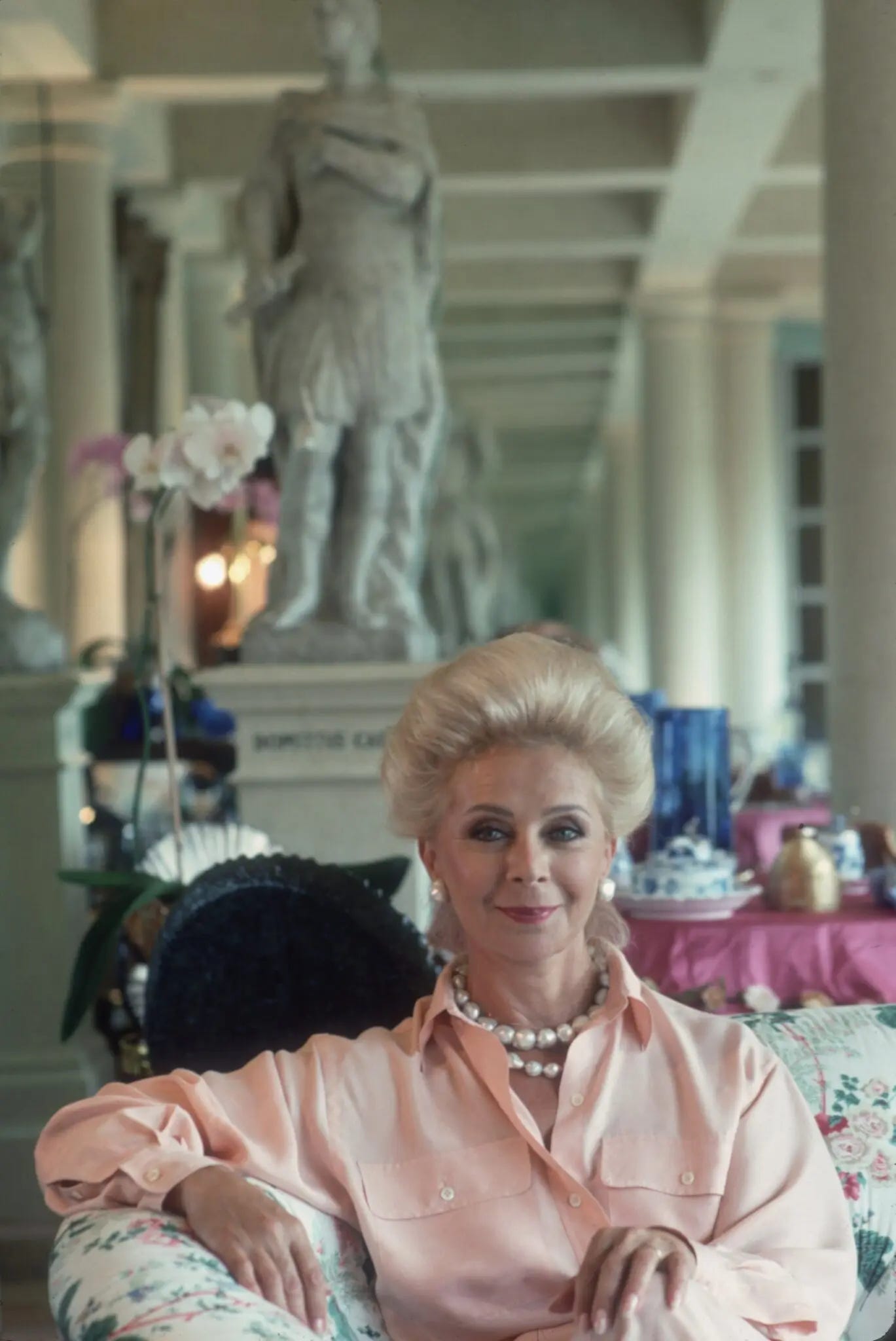
With today’s Adorable Story, we'll be covering the captivating life of Lily Safra, a woman whose story is as intriguing as it is mysterious.
Lilian's life has been an unique mix of love, loss, wealth, and philanthropy.
From Humble Beginnings to High Society
Born as Lily Watkins in Porto Alegre, Brazil, on December 30, 1934, Lily Safra's life took her on an incredible journey from Brazil to the glitz and glamour of Monaco.
Lily was the daughter of Wolf White Watkins, a railway engineer of Anglo-Jewish origin born in Czechoslovakia who moved to South America during the electrification of Brazilian railroads.
Her mother, Annita Noudelman de Castro, a Uruguayan of Ukranian-Jewish ancestry, had fled her native Ukraine in the face of the numerous antisemitic pogroms started against the Jewish community under the pretext of the Russian Revolution and Russian Civil War.
Lily grew up in Rio de Janeiro, and then moved with her family to Montevideo, Uruguay.
In September 1952, three months shy of her 18th birthday, she married Mario Cohen, an Argentine hosiery magnate of Italian-Jewish descent. Together, they had three children. Lily and Mario Cohen later divorced in the early 1960s.
Lily then returned to Brazil and, in 1965, she married Alfredo "Freddy" Monteverde (he had Hispanicized his former surname: Greenberg).
A prominent Brazilian businessman from a prosperous family, Monteverde was a Romanian-Jewish immigrant who fled Europe in 1939. He was a leader in the Brazilian household appliance distribution business, where he established the “Ponto Frio” refrigerators brand. Lily also adopted his child, Carlos.
In 1969, Monteverde — who suffered of bipolar disorder — killed himself by gunshot and left her a USD 200 million fortune.
Monteverde’s mother and sister did not believe he committed suicide and they immediately challenged the way Monteverde’s assets were divided and assigned to Lily: in fact, most of his assets were left out of his will, and thus almost all his entire fortune was inherited by Lily.
Two different police investigations concluded that Monteverde committed suicide.
A month after his death, widow at the age of just 34, Lily left Brazil and moved to London.
In London, Lily met her late husband's banker, Edmond Safra — the scion of a Lebanese merchant family — who helped her secure control over her late spouse's entire fortune. Lily even dated Edmond Safra for some time, but the romance ended abruptly: Edmond was mad of her, but at the time his family, who was from a proud line of Halabi (Aleppo or حلب in Arabic), Sephardic Jewish descent, did not approve of his relationship with the more secular Lily, who was of Ashkenazi Jewish descent.
In 1972, after a six-month courtship, Lily married the handsome English businessman Samuel Bendahan, also of Sephardic Jewish descent, during a holiday in Acapulco, Mexico: Lily looked euphoric in Mexico but everything changed as soon as she returned back to London and the two separated after a mere two weeks. She divorced him one year later in Reno, Nevada and she soon returned to Edmond Safra.
In 1976, Lily finally married Edmond Safra: the ceremony was attended, among others, by Ronald and Nancy Reagan and the Aga Khan.
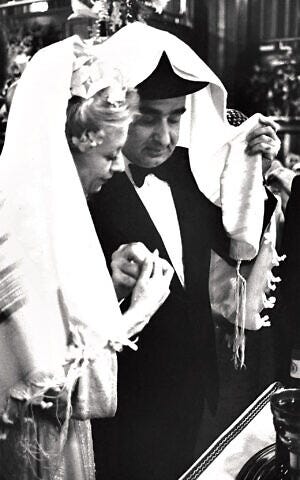
This is the most well-known of her marriages: Edmond was at the time a legendary banker and the founder of the Republic National Bank of New York.
The Safra family originated in Aleppo, Syria, where they were traders before a circuitous route via Lebanon eventually landed them in Brazil. The eldest Safra, Joseph, was reportedly, at a time, the world’s richest banker.
Lily and Edmond divided their time among homes in New York City, Monaco, Geneva, and across the French Riviera.
Mrs. Safra, who was known to the press — especially the British tabloids — as “the Gilded Lily,” led what at first glance might seem to be a charmed life […] and counted Prince Charles and Jacob Rothschild among her close confidants.
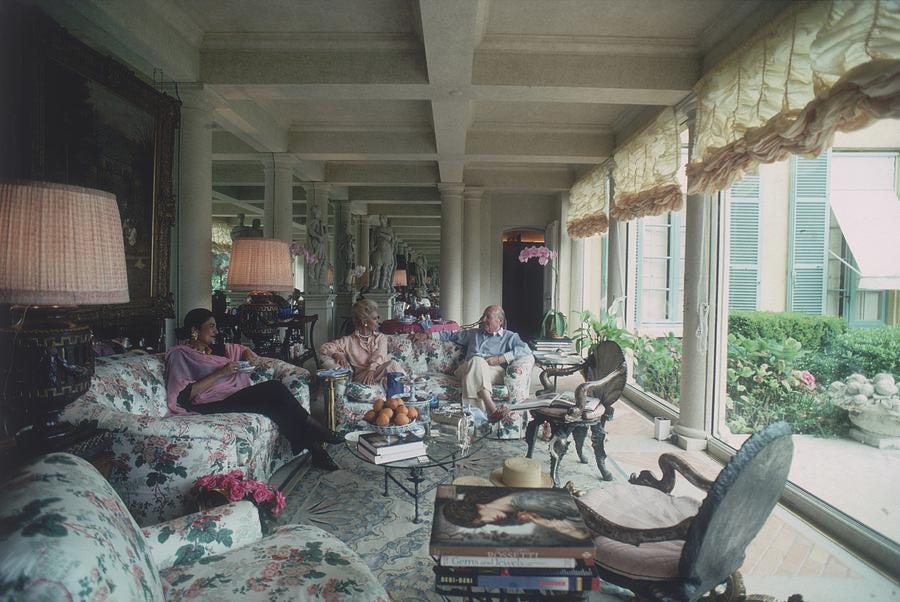
Though they had homes across Europe, they eventually settled in Monaco and the nearby Villefranche-sur-Mer on the French Riviera, where they bought from Gianni and Marella Agnelli a villa once owned by the king of Belgium and said to be one of the old continent’s most expensive properties: Villa La Leopolda.
Philanthropy and the Safra Foundation
Throughout their life, Lilian and Edmond shared a deep commitment to philanthropy.
Together, they established the Edmond J. Safra Foundation, which supported countless causes in the fields of education, science, medicine, and the arts. The foundation has made significant contributions to institutions such as the Louvre, the American Museum of Natural History, and the National Gallery in London.
Their foundation endowed the Edmond J. Safra Center for Ethics at Harvard, the Edmond J. Safra campus at the Hebrew University of Jerusalem, the Edmond and Lily Safra International Institute of Neuroscience in Brazil and the Edmond and Lily Safra Children’s Hospital in Israel.
Outside the foundation, Lily’s personal beneficence was vast, eclectic and from her own pocket: Lily was a donor and member of the board of directors of the Michael J. Fox Foundation in honor of her husband who suffered of Parkinson’s disease.
She paid for students to visit Auschwitz and to study at the Paris Opera. After Hurricane Katrina devastated the campus of Dillard University, a historically Black institution in New Orleans, she gave the university USD 500,000 for its recovery.
The End of an Era
On December 2, 1999, Lily and Edmond Safra gained Monegasque citizenship.
On December 3, 1999, Edmond was killed in his home in Monaco in a fire that was determined to be arson. His death attracted considerable media interest because of his wealth and position: “he apparently felt so safe here that he did not have his bodyguards stay the night when he slept in Monaco”.
Once he saw the fire in his apartment, Edmond Safra, who had been diagnosed with Parkinson’s disease and needed care, had locked himself in a bathroom that doubled as a “safe room” together with one of his nurses, and under a panic attack, he refused to come out: they both eventually died of smoke inhalation.
Lily, who was in another wing of the same apartment, escaped unharmed.
At the time, British tabloids were filled with fantastic stories about two knife-wielding assailants (sent, depending on the sources, either by the Russian mafia or by a Columbian drug cartel), masked in balaclavas, who had come in through a skylight to kill him. Allegedly, when they failed to break through the bathroom door, it was said, they set fire to the house and escaped, stabbing Ted Maher, one of the other nurses, in the stomach and thigh along the way.
But the real story was even more strange.
A few days after the fire, Mr. Maher, who was also a former US Green Beret, admitted to setting a wastepaper basket on fire and stabbing himself. His plan, he said, had been to alert the authorities and save the day, so to win his employer’s good graces. Instead, the fire raged out of control and ended up killing Edmond Safra.
Maher was convicted and sentenced to ten years in jail.
A Legacy of Love and Philanthropy
With his will, Edmond Safra left 50% of his assets to several charities, with the remainder divided among his family members and wife Lily, who received USD 800 million.
Lily moved to London where she bought a six-floor belle époque mansion in Belgravia and she became an irresistible target for the city’s infamous tabloid press which were especially suspicious of her inherited fortune and charitable work.
One newspaper even blamed her for single-handedly making London’s elite social scene more like that of New York, where, quelle horreur, “social position is defined not by what you have, but by how much you can afford to give away to worthy causes.”
After her husband’s death, many of her donations came through selling pieces of her vast art collection. In 2012 she sold 70 pieces of jewelry, including a 34.05-carat rectangular-cut diamond ring, to benefit 20 charities, including one that aided impoverished Rwandan children.
By 2012, Lily had largely fallen out of the public eye. She had sold her mansion in exchange for something smaller and more manageable (though still in Belgravia). Her dinners were now more likely to be low-key, intimate affairs among friends than grand galas. She was said to prefer the company of her grandchildren to that of lords and ladies.
The British tabloids wondered where she had gone, and why she had seemingly given up on pursuing power and fame. But it was also possible that they had totally misread her from the start.
Lily Safra died from pancreatic cancer in Geneva, Switzerland on July 9, 2022 at age 87.
— Alberto @





